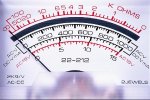Bi-Annual Corporate Sales Meeting
|
Quad-Lock recently held their Fall Sales Meeting November 13th and
14th, in Langley, BC. Sales Managers from North America and Europe were
present for this bi-annual event and it was two days well-spent to
improve our knowledge-base and plan for 2009.
There were many topics discussed, but one major theme was declining
building permits and the mortgage crisis. The mainstream media has spent
a lot of time dedicated to these topics and the building industry has
definitely faced its challenges in 2008. However, the tone expressed by
the sales team was of a much brighter outlook for 2009. We know the
building market is shrinking and mortgages / building loans will be more
difficult to attain, but there still will be thousands and thousands of
new structures built around the world. Here are some of the things we
discussed and considered during our 2009 planning:
- Non-value added suppliers will exit from this more competitive
market space
- Building material suppliers who provide sustainable solutions
will see their markets expand
- The commercial construction market will offset residential
market losses
- The buying public will be more discerning in spending their
dollars, especially when choosing sustainable products and
technologies
- Exemplary customer service will be paramount in this shrinking
market
Obviously, these are only a few things we discussed at the meeting,
but I was encouraged by future opportunities that were communicated, as
well as the positive attitudes portrayed by the Quad-Lock sales team.
Quad-Lock is well positioned for 2009 and beyond, we have
specifically addressed every one of the key points indicated above. We
are the premier sustainable solution, providing tremendous value over
our competitors. The insulating concrete form (ICF) market continues to
grow and is becoming a sought-after, mainstream building technology. I
wish you all a strong finish to your year and a positive outlook for
2009.
Good Selling,
DJ Ketelhut
Director of Sales, Eastern North America
Training & Technical Services has announced the
2009
training schedule - the most ambitious schedule yet. Regional
trainings will be held across the USA and Canada from January through
December. Builders and building designers will spend an
information-packed day in an introduction to three advanced systems for
poured-in-place walls, suspended slabs and roof construction, as well as
the latest R-ETRO insulation system for new and existing buildings.
Tools for green roof design and construction will also be shared.
 Sessions
will focus on individual products and their proper installation, as well
as the sustainable aspects of each system and the structures they
create. The popular hands-on building session will still be a major
feature of each day. Both builders and designers will take away concepts
and reference materials to help build a sustainability strategy for
their businesses. Sessions
will focus on individual products and their proper installation, as well
as the sustainable aspects of each system and the structures they
create. The popular hands-on building session will still be a major
feature of each day. Both builders and designers will take away concepts
and reference materials to help build a sustainability strategy for
their businesses.
The coming year's sessions combine elements of both beginning and
advanced ICF training to give attendees a wider scope of each Quad-Lock
product's capabilities. And, when it comes time to install, our improved
course materials will remind participants of the details discussed in
these sessions. Building design professionals who attend will receive
continuing education credit(s) for their professional development
requirements (USA and Canada).
See the full training schedule
in the 'Events and Training' section on our website. A downloadable
registration form for each event is available for you on the website.
Douglas Bennion
Manager, Training & Technical Services
R-ETRO System Drainage Layer
|
A few questions have come in since the launch of the (now,
award-winning) R-ETRO System about the effect of the small air gap left
between the EPS panels and the existing building as a result of the
thickness of the R-ETRO Tie backing plate (about 1/4 inch). The concern
is about air movement behind the panels affecting the insulating
capacity of the system. The answer lies in the physics of heating and
cooling (HVAC).
The volume of air that circulates in the 1/4 inch air space is very
small and is not a significant factor in exchanging conditioned air. A
system would have to be put in place to force air through the space to
really make any difference, natural convection is not that force. For
instance, if you take a wall that is 10 feet high and 100 feet long, the
volume of air behind the Plus Panels is only 20 cu. ft. As HVAC experts
will tell you, air can only transport a finite amount of heat. Either
the number of air changes or the total volume of air moving has to
change dramatically to make a noticeable impact.
One suggestion is to seal the top edge of the installation with spray
foam and leave the bottom open. This interrupts flow of air via
convection (stack effect) yet leaves the bottom open to promote
drainage, if necessary. The resulting layer of static air is widely
recognized as adding to the insulating value of the entire
assembly.
Conclusion: The contribution of the 1/4 inch space to the
drying capacity of the system far outweighs any potential for heating or
cooling loss. Many jurisdictions in damp climates are now making this
drainage layer (called a rain screen) mandatory in building envelope
designs.
Douglas Bennion
Manager, Training & Technical Services
As ICF becomes a more prevalent building system, North American
dealers and installers of Quad-Lock ICF need to extend their knowledge
of building techniques to comply with the Occupational Safety and Health
Administration (OSHA). In order to prepare for the upcoming inspection
and enforcement by OSHA, this and future articles will discuss various
compliance issues facing the ICF industry.
Jobsite Visits...
Recently, a future ICF purchaser who wanted to observe the
installation of ICF products visited a large commercial jobsite. The
individual showed up in sandals and without a hardhat, ignoring signs
and warnings about jobsite safety requirements. The general contractor's
site supervisor was extremely upset and reminded all parties of the OSHA
regulations concerning jobsite safety. Let's look at some issues
regarding site visitors:
1] Never send a visitor to a site unless you, as the ICF
professional, are present with proper safety equipment to protect the
visitor and yourself; obviously you should secure permission to visit in
advance.
2] All site visitors along with construction personnel are required
to have a hard hat on their head at all times when inside the wire fence
surrounding a jobsite - no exceptions. Hard hats should be less than
five years old as the plastic decays during normal wear and tear.
3] All site visitors and construction personnel are required to wear
steel toe equipped footwear to protect their feet from being crushed in
the event items are dropped from a height (obviously, not the foam!).
Although steel toe footwear is cumbersome and uncomfortable, it is a
must as contractors are subject to fines if employees or visitors are
found to be without this protective gear.
4] Bright colored safety vests or jackets are required for all
construction employees as well as site visitors. The bright colors and
reflective materials make people more visible amongst the myriad
equipment and materials on a jobsite. Safety vests or jackets are
especially important if there is a crane or motorized equipment working
on the site swinging or moving materials into place.
5] When accessing areas that require the use of a ladder, there are
several important rules to remember.
- The ladder should project above the walk surface being accessed
by four feet to provide for correct transfer between the ladder and
walking surface.
- OSHA requires that one should be able to step off the ladder
onto the walk surface without crossing over the top of the ladder.
- If access onto a floor level, the edge of the open floor must
have a barrier installed to prevent falls off the edge, or a fall
protection harness should be provided and connected before stepping
off the ladder. This can be difficult if a platform is not erected
adjacent to the ICF bracing system.
We'll discuss ladders in more detail in a future article.
6] At no time should a visitor be allowed on an ICF support system
without a safety harness that will provide adequate fall protection.
7) It is typical for liability insurance providers to require an
insurance waiver that excludes coverage of all site visitors, invited or
not, including building/property owners, even if they have been properly
equipped for jobsite safety. Workmen's Compensation insurance probably
does not cover these visitors either; it is intended to cover the
contactor and its employees, only.
Future ideas on tool safety, ladders and scaffold
placement, Material Safety Data Sheets (MSDS) and concrete placement
will follow in upcoming months. If you have any topics that you would
like to see covered, please
contact us.
Proven Energy Efficiencies
 As part of our on-going development of materials to assist in the
sale of Quad-Lock, we want to create a library of statistics about
structures built with Quad-Lock Insulating Concrete Forms. You can help
us by submitting your energy bills, along with the bills from a
comparable house in your neighborhood for us to add to our library. When
you do this Quad-Lock will pay your highest month's energy bill for your
troubles. As part of our on-going development of materials to assist in the
sale of Quad-Lock, we want to create a library of statistics about
structures built with Quad-Lock Insulating Concrete Forms. You can help
us by submitting your energy bills, along with the bills from a
comparable house in your neighborhood for us to add to our library. When
you do this Quad-Lock will pay your highest month's energy bill for your
troubles.
Contact us for more information.
|

 The
winners of the 2008 WFX New Product Awards were announced in early
November and the
The
winners of the 2008 WFX New Product Awards were announced in early
November and the 
 As part of our on-going development of materials to assist in the
sale of Quad-Lock, we want to create a library of statistics about
structures built with Quad-Lock Insulating Concrete Forms. You can help
us by submitting your energy bills, along with the bills from a
comparable house in your neighborhood for us to add to our library. When
you do this Quad-Lock will pay your highest month's energy bill for your
troubles.
As part of our on-going development of materials to assist in the
sale of Quad-Lock, we want to create a library of statistics about
structures built with Quad-Lock Insulating Concrete Forms. You can help
us by submitting your energy bills, along with the bills from a
comparable house in your neighborhood for us to add to our library. When
you do this Quad-Lock will pay your highest month's energy bill for your
troubles.